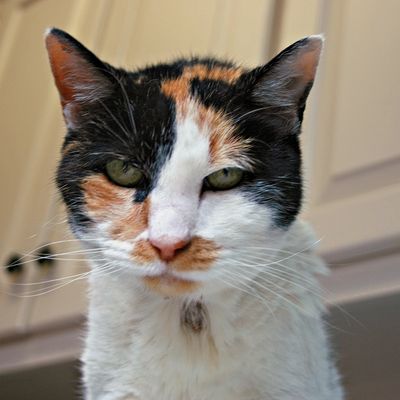There’s a lot of research out there about what’s going to happen as baby -boomers move into old age, and most of it’s pretty grim: As Science of Us has previously reported, boomers are on track to enter their golden years with higher rates of diabetes, obesity, and overall worse health than their parents’. They’re also less socially engaged than seniors past, even as a growing raft of studies point to isolation as a health risk. (A smaller but no more uplifting projection: Our aging population means we’re about to see a big uptick in hoarding.)
The tiniest bright spot in all this — it’s almost there, if you squint — is that at least we know what healthy aging is supposed to look like. Seniors and geriatricians and public-health researchers have a benchmark against which they can measure things, an idea of health to work toward. Even if the status quo doesn’t currently measure up, at least it’s being measured.
This is not the case, though, for our pets, who are living longer than ever before. The average lifespan of a cat in the U.S. is now around 15 years, up from single digits just a few decades ago, and an estimated 20 percent of cats are at least 11 years old (that’s roughly 60 in human years). Great news for cats and the people who love them, but it also presents a problem: We don’t really have much of an idea what healthy aging looks like in a cat. Which, in turn, means we don’t really know the best way to care for our feline pals late in life.
But two new papers in the Journal of Feline Medicine and Surgery offer a starting point. In an attempt to counteract what one paper calls a “paucity of research on feline aging,” (more like paw-city, amirite? No? Never mind), veterinary researchers have pulled together a sort of primer on the subject, laying out in detail both the normal physical and cognitive changes that happen to cats over time and how to tell normal aging from signs of disease. (They also offer a handy acronym to help owners watch out for signs of cognitive decline: “DISHA,” which stands for disorientation, interaction changes, sleep disturbances, house-soiling, and changes in activity.)
Dedicated cat enthusiasts can read through the papers in their entirety — there are charts galore, plus some verrry in-your-face photos of feline gum disease — but it’s also interesting to consider what these two studies represent: the groundwork, perhaps, for a subset of aging research focusing on the animals that stay with us through our own aging processes. By “fully understanding healthy aging, veterinarians and pet owners alike may be able to reduce risk factors for developing certain diseases in aging cats,” the researchers wrote — meaning more time, and better time, that people get to spend with their feline companions. Even if they are a little more raggedy, crankier, and have some weird gum stuff going on.





